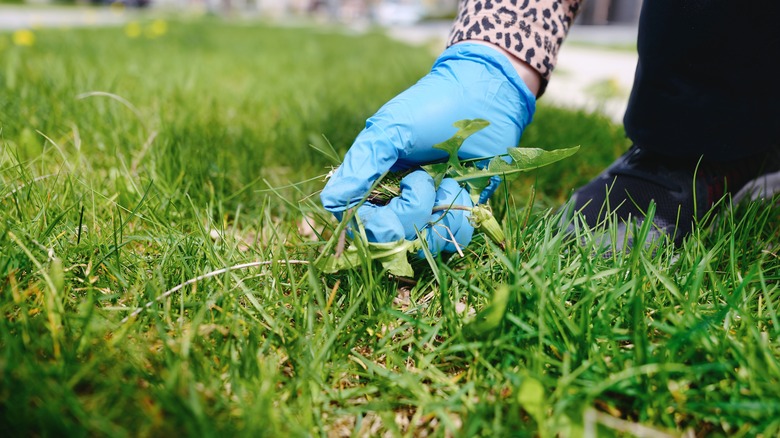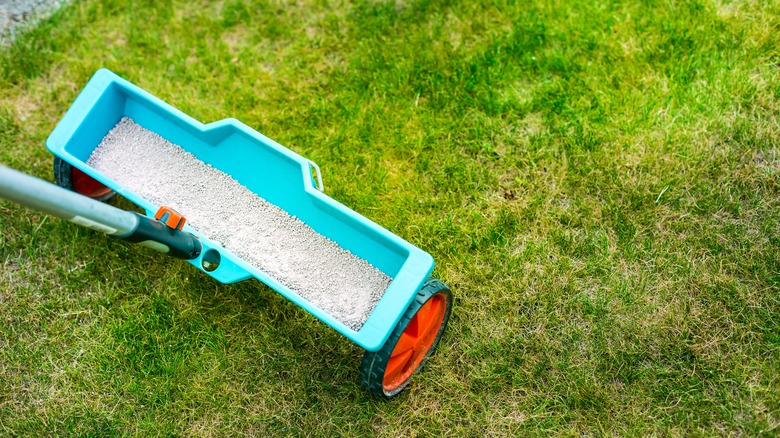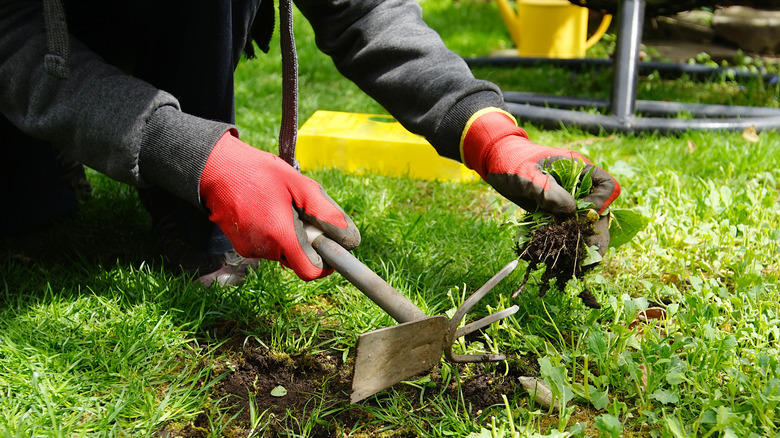The Best Time Of Year To Get Rid Of Your Lawn's Weeds And Why
When you want to create a beautiful lawn that's the envy of the neighborhood, eliminating weeds without killing your grass is the best way to go. Complicating things, though, is the debate over when is the best time to kill the unwanted plants. Most experts agree that you shouldn't weed and feed your lawn in midsummer, so it comes down to spring versus autumn. Although some experts prefer to perform applications on the lawn during the autumn, the majority of them call spring the proper time to attempt to eliminate weeds.
By performing these control techniques in the spring, you can prevent weeds from growing in the first place and gaining a foothold in the lawn. Once they're actively growing, they're stealing nutrients, sunlight, and water from the grass. This can cause a weakening of the entire lawn, leaving you to battle the problem throughout the remainder of the growing season.
Ideally, you will have the ability to treat weeds in both spring and autumn. Applying herbicides in the fall allows you to attack the roots, weakening them when they are trying to prepare to germinate. They then may struggle to recover in the spring, meaning your grass may have a chance to grow stronger before the unwanted pests can begin to steal nutrients and water. However, if you only have the ability to treat your weeds at one time during the year, spring slightly edges out fall to deliver the best results.
Primary benefits of treating the weeds in the spring
Because different types of weeds will emerge in late spring and early summer, applying a pre-emergent herbicide in the early spring helps to control these unwanted plants before they start to appear. If you wait to treat them until the autumn, these weeds will have the chance to become stronger and affect the ability of the grass to gain strength during the summer. The pre-emergent herbicide takes care of common broadleaf weeds that often plague your yard, such as dandelions and plantain. The herbicide prevents the seeds from germinating, ensuring they never have a chance to start growing.
It's also especially helpful to treat weeds during the spring when you have cool-season grasses in your lawn, including common strains like Kentucky bluegrass, ryegrass, and fescue. These options are highly popular for lawns in certain areas of the United States, but they typically begin to go into a dormancy phase in the summer when they become stressed from drought. When these plants are not growing vigorously, it allows weeds that began to establish themselves in the spring to continue growing, as they typically do not suffer problems with dry weather. Suddenly, these unwanted pests are growing tall and strong while the grass is idle. If you applied herbicide at the start of the growing season, though, you could have prevented the weeds from being strong at the same time your cool-season grasses moved toward dormancy.
Tips for applying weed killer to your lawn in the spring
If you are going to put down herbicides in the spring to try to control weeds throughout the growing season, you need to follow a few techniques and tips. For starters, if you are planning to apply a pre-emergent control product, it's important to match the timing of the application to the temperature. Weeds begin to germinate when temperatures reach 50 degrees Fahrenheit for at least five straight days, so you will want to make this application before the weather forecast calls for multiple days in a row with the proper temperature.
It's also important to follow the directions on the pre-emergent product that you select, such as watering it into the soil. Failure to do so could make the product far less effective. If you wait too long to try to apply the pre-emergent herbicide, it will not work, as it cannot take out the weeds once they are actively growing.
Finally, as part of your spring weed control plan for your lawn, you should hand pull any weeds as you see them sprouting. Granted, this is a lot of work if you have a large yard, so you may want to focus on a small area at first and expand out in future years. If you keep up with the work, this is a great way to eliminate weeds in the spring to give you the strong healthy lawn you want by summer.


